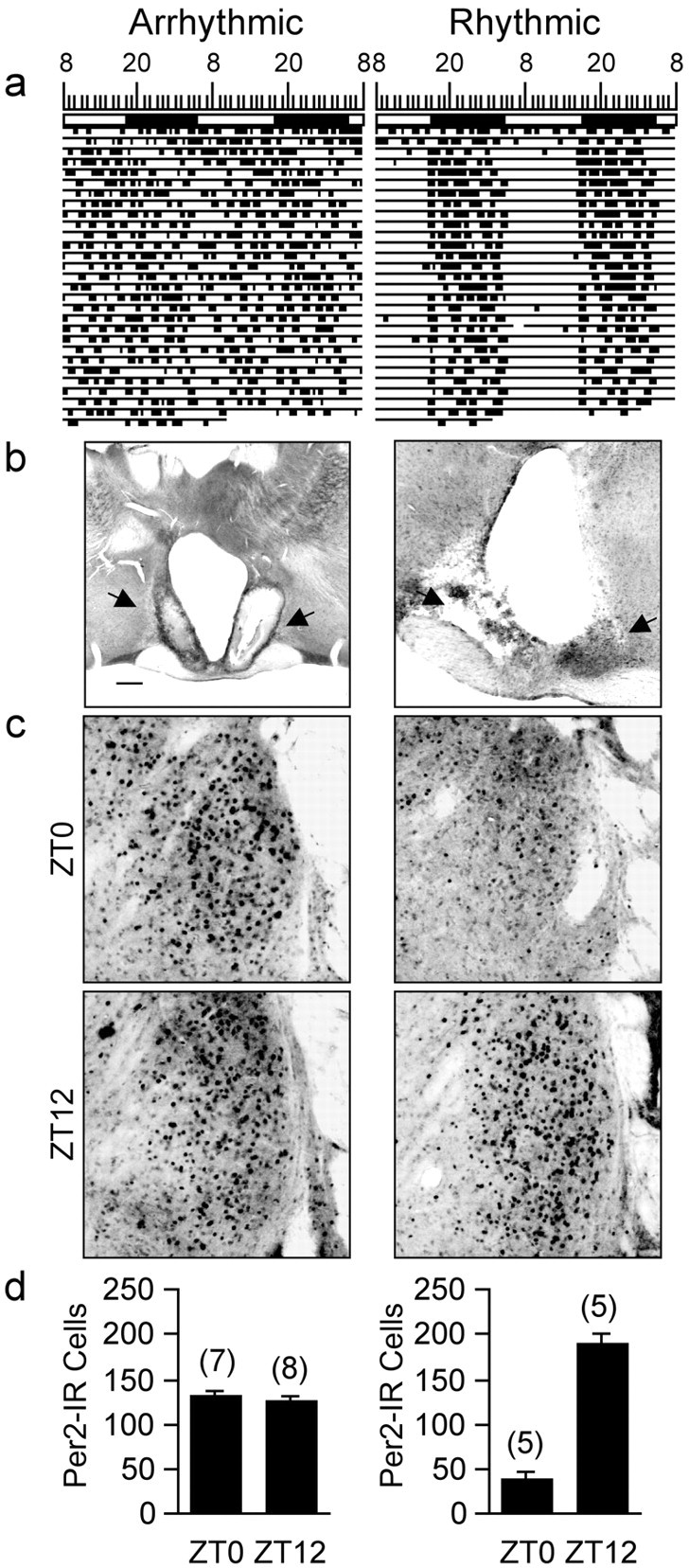Figure 4.

Bilateral SCN lesions that disrupt circadian activity rhythms abolish PER2 oscillations in the BNST-OV. a, Representative double-plotted actograms of wheel-running activity in an SCN-lesioned arrhythmic rat (left) and in a lesioned rat that remained rhythmic (right). The rats were housed under a 12 hr LD cycle. The vertical marks indicate periods of activity of at least 10 wheel revolutions per 10 min. Successive days are plotted from top to bottom. b, Photomicrographs showing the largest extent of the SCN lesions (arrows) of rats whose actograms are shown in a. Scale bar, 200μm. c, Photomicrographs showing examples of PER2 immunostaining in the BNST-OV from SCN-lesioned, arrhythmic rats (left) and from lesioned, rhythmic rats (right) as a function of ZT. Magnification, 20×. d, Mean ± SEM number of PER2-immunoreactive nuclei in the BNST-OV of SCN-lesioned arrhythmic rats (left) and of lesioned, rhythmic rats (right) as a function of ZT. The numbers in brackets indicate the number of rats per time point.
